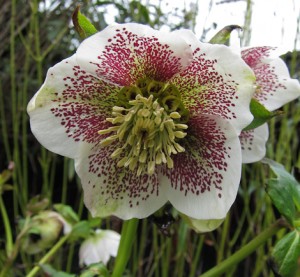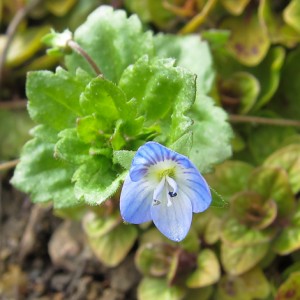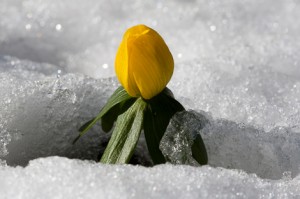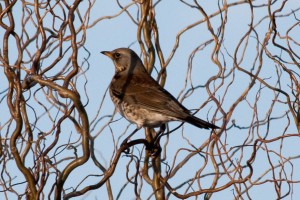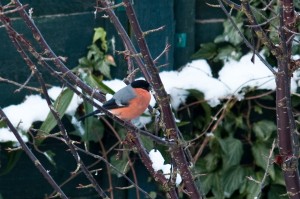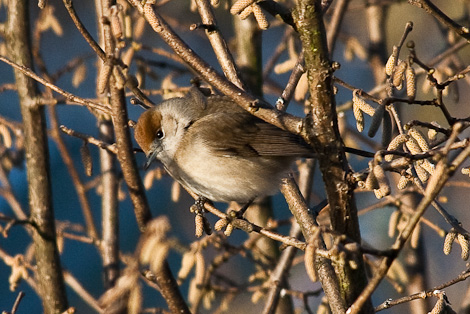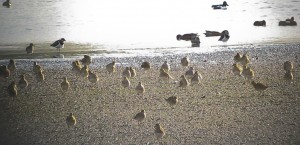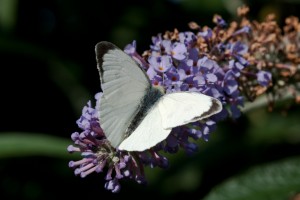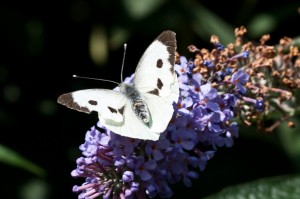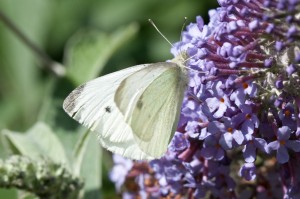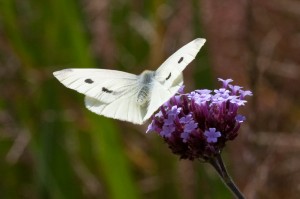So, it was the time of year when all garden birds traditionally do a bunk to the hedgerows and rooftops so that they cannot be counted in the RSPB’s big garden birdwatch statistics. Well, that is often the way that it feels. Still, every year I sit by the window for an hour and try to count all of my little feathered friends.
There seems to have been extra publicity this year due to the concern that the recent cold weather may have done for half of the little birds that we would commonly find in the garden. Is it the case – we will have to wait and see, but, for once, my garden was brimming with life – I struggled to keep up as birds flitted from one side to the other. It appears that my tactic of early morning (9am) nature watching, when it was still cold, paid off.
I managed to see a total of 13 different species this year, more than the 10 that @naturesvoice for the RSPB tweeted. The count started with the ever reliable pair of blue tits, so it should because I think one of them roosts in the pipe from the boiler. They were sooned joined by blackbirds (I counted 5 at one point – not bad for a garden that is only 20’x30′) and chaffinches. The male chaffinches are certainly starting to get some more colour as we move towards Spring, but they are still hard to keep track of as they zoom from one side of the garden to the other, one minute on a feeder, the next foraging around in the undergrowth.
I was particularly pleased that the bullfinches turned up within the allotted hour – they tie with long-tailed tits as my favourite bird – they have been visiting the garden all Winter. I was worried that they would not show today, but, 3 turned up and stayed for a while. (Looking on Twitter it appears that these lovely birds are becoming more common in gardens and, indeed, have recently been removed from the BTO’s Red List). I was also particularly pleased when I saw some sparrows in the garden. I am sure that you have all read the reports about the disappearance of house sparrows, and I definitely haven’t seen very many since the Summer, but, I got a maximum of four, including a couple that turned up just before the end of the hour and stared pitifully at the saucer of frozen water (don’t worry, we went out with fresh water just after the hour).
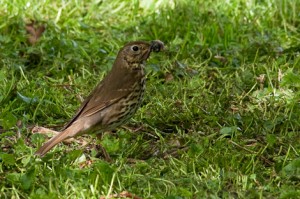 The best surprise of the hour came from the song thrushes though. Before the Winter we had only rarely seen one young song thrush in the garden in the entire 10+ years that we have lived here, although we can usually hear them singing from the old railway track. However, this Winter one has started putting in an appearance, although he (or she) is usually chased away by a very territorial blackbird (as if there is any other type). But today I was delighted to see two song thrushes in my garden at the same time – partly because they are another bird not doing well, and partly because I am a keen organic gardener and they will certainly help my war against snails.
The best surprise of the hour came from the song thrushes though. Before the Winter we had only rarely seen one young song thrush in the garden in the entire 10+ years that we have lived here, although we can usually hear them singing from the old railway track. However, this Winter one has started putting in an appearance, although he (or she) is usually chased away by a very territorial blackbird (as if there is any other type). But today I was delighted to see two song thrushes in my garden at the same time – partly because they are another bird not doing well, and partly because I am a keen organic gardener and they will certainly help my war against snails.
The total species count as mentioned before was 13 and consisted of blue tit, great tit, greenfinch, bullfinch, chaffinch, robin, dunncock, blackbird, song thrush, starling, house sparrow, wood pigeon, collared dove.
The only regular that did not put in an appearance was the goldfinch. Throughout the year we have up to 8 of these noisy, colourful characters in the garden, but, it appears that they are not very fond of the cold. Throughout the 2 weeks of snow they did not put in any appearance as far as we can tell, but reappeared once the snow had gone. Similarly, they appeared later on today, once the air had warmed up a little. I am not sure where they go, but they are still welcome when they come back.
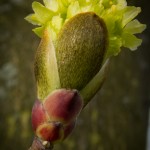 To start with, in my garden the Clematis Armandii is flowering away on the bottom fence, and, every now and again giving a hint of scent. The Primroses and Hellebores are still looking great, and, the Pulmonaria is in full flower and attracting bumblebees. The early tulips have now gone over, but the others are starting to show flower buds.Trees are now starting to show hints of lime green colour, such as this Maple / Sycamore that I pass on my way to work.
To start with, in my garden the Clematis Armandii is flowering away on the bottom fence, and, every now and again giving a hint of scent. The Primroses and Hellebores are still looking great, and, the Pulmonaria is in full flower and attracting bumblebees. The early tulips have now gone over, but the others are starting to show flower buds.Trees are now starting to show hints of lime green colour, such as this Maple / Sycamore that I pass on my way to work.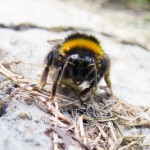 There are more flowers out for the aforementioned bumblebees, and, ergo, more bumblebees; mainly queens foraging before setting up home – such as this one that I took a picture of whilst it was a little dazed having for some reason flown into a lampost! On the flower front, the Celandines are particularly noticeable on sunny roadsides, as is the purple flower ground ivy. There are also some wild violets flowering in places.
There are more flowers out for the aforementioned bumblebees, and, ergo, more bumblebees; mainly queens foraging before setting up home – such as this one that I took a picture of whilst it was a little dazed having for some reason flown into a lampost! On the flower front, the Celandines are particularly noticeable on sunny roadsides, as is the purple flower ground ivy. There are also some wild violets flowering in places.